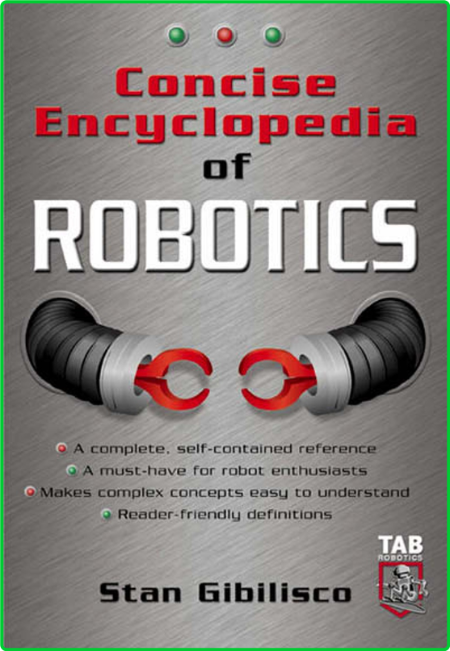
Encyclopedia of Robotics
pdf | 1.71 MB | English | Isbn: B07NY71THF | Author: Gibilisco, Stan. | Year: 2018
Description:
The Encyclopedia of Medical Robotics combines contributions in four distinct areas of Medical robotics, namely: Minimally Invasive Surgical Robotics, Micro and Nano Robotics in Medicine, Image-guided Surgical Procedures and Interventions, and Rehabilitation Robotics. The volume on Minimally Invasive Surgical Robotics focuses on robotic technologies geared towards challenges and opportunities in minimally invasive surgery and the research, design, implementation and clinical use of minimally invasive robotic systems. The volume on Micro and Nano robotics in Medicine is dedicated to research activities in an area of emerging interdisciplinary technology that is raising new scientific challenges and promising revolutionary advancement in applications such as medicine and biology. The size and range of these systems are at or below the micrometer scale and comprise assemblies of micro and nanoscale components. The volume on Image-guided Surgical Procedures and Interventions focuses primarily on the use of image guidance during surgical procedures and the challenges posed by various imaging environments and how they related to the design and development of robotic systems as well as their clinical applications. This volume also has significant contributions from the clinical viewpoint on some of the challenges in the domain of image-guided interventions. Finally, the volume on Rehabilitation Robotics is dedicated to the state-of-the-art of an emerging interdisciplinary field where robotics, sensors, and feedback are used in novel ways to re-learn, improve, or restore functional movements in humans.
Volume 1, Minimally Invasive Surgical Robotics, focuses on an area of robotic applications that was established in the late 1990s, after the first robotics-assisted minimally invasive surgical procedure. This area has since received significant attention from industry and researchers. The teleoperated and ergonomic features of these robotic systems for minimally invasive surgery (MIS) have been able to reduce or eliminate most of the drawbacks of conventional (laparoscopic) MIS. Robotics-assisted MIS procedures have been conducted on over 3 million patients to date - primarily in the areas of urology, gynecology and general surgery using the FDA approved da Vinci® surgical system. The significant commercial and clinical success of the da Vinci® system has resulted in substantial research activity in recent years to reduce invasiveness, increase dexterity, provide additional features such as image guidance and haptic feedback, reduce size and cost, increase portability, and address specific clinical procedures. The area of robotic MIS is therefore in a state of rapid growth fueled by new developments in technologies such as continuum robotics, smart materials, sensing and actuation, and haptics and teleoperation. An important need arising from the incorporation of robotic technology for surgery is that of training in the appropriate use of the technology, and in the assessment of acquired skills. This volume covers the topics mentioned above in four sections. The first section gives an overview of the evolution and current state the da Vinci® system and clinical perspectives from three groups who use it on a regular basis. The second focuses on the research, and describes a number of new developments in surgical robotics that are likely to be the basis for the next generation of robotic MIS systems. The third deals with two important aspects of surgical robotic systems - teleoperation and haptics (the sense of touch). Technology for implementing the latter in a clinical setting is still very much at the research stage. The fourth section focuses on surgical training and skills assessment necessitated by the novelty and complexity of the technologies involved and the need to provide reliable and efficient training and objective assessment in the use of robotic MIS systems.
Category:Laparoscopic & Robotic Surgery, Robotic Engineering, Robotics & Automation
Hosters: Rapidgator |Nitroflare
https://nitro.download скачать/view/B815EA807B1A740/hqy1hv799c01.rar

